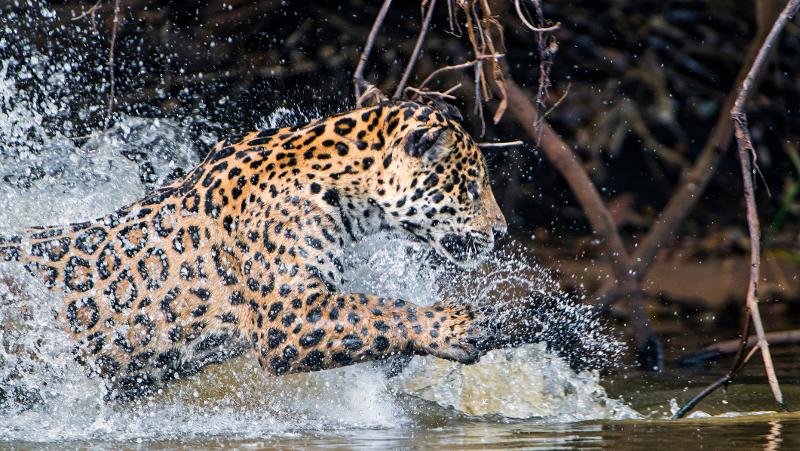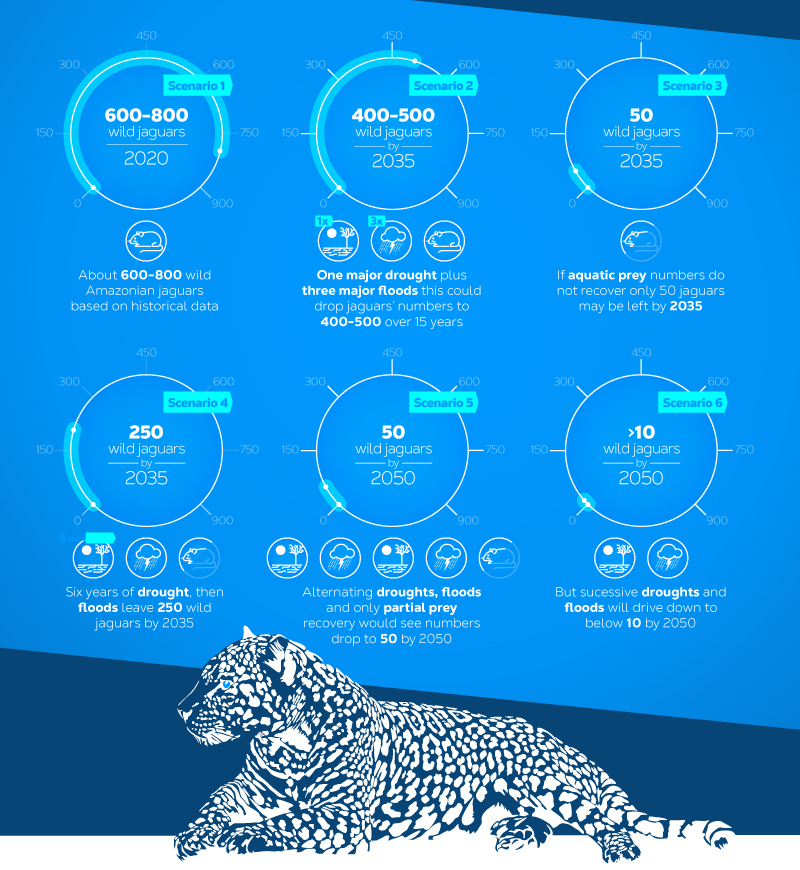
A new QUT-led study has found wild jaguars in the Amazon can cope with climate extremes in the short-term, but numbers will rapidly decline if weather events increase in frequency, diminishing sources of food.
Distinguished Professor Kerrie Mengersen and Professor Kevin Burrage led a team of researchers in a world-first investigation of the big cat’s chances of survival.
The new research results have been published in Ecology and Evolution.
The jaguar (Panthera onca) is the dominant predator in Central and South America and is considered a near-threatened species by the International Union Conservation Nature.
Research main points: -
- Results are concerning for future viability of jaguar populations in Peruvian Amazon.
- Stochastic statistical temporal model of jaguar abundance considers six population scenarios and estimates of prey species.
- Jaguar diet includes white lipped peccary, collared peccary, red brochet deer, white tailed deer, agouti, paca and armadillo.
- Species exhibit some robustness to extreme drought and flood, but repeated exposure can result in rapid decline.
- Predictions show species can recover- at lower numbers – if there are periods of benign climate patterns.
- Modelling provides framework to evaluate complex ecological problems using sparse information sources.
Professor Mengersen said the Pacaya Semiria Reserve covers 20,800 km2 in the Loreto region of the Peruvian Amazon, comprised of mostly primary forest.
“Estimates of jaguar numbers are difficult to achieve because the big cats are cryptic by nature, are not always uniquely identifiable, and their habitat can be hostile to humans,” Professor Mengersen said.
The project drew on information gathered during a 2016 trip to the remote reserve, as well as a census study based on camera traps and scat analysis, jaguar ecology, and an elicitation study of Indigenous rangers in the Pacaya Samiria National Reserve.
Six jaguar population scenarios were analysed mapping the jungle creature’s solitary behaviour, mating, births of cubs at certain times of the year, competition, illegal hunting, death from starvation and availability of key prey.

Professor Kevin Burrage cautioned the predicted results for the jaguars in the long-term were concerning.
“Our results imply that jaguars can cope with extreme drought and flood, but there is a very high probability that the population will crash if the conditions are repeated over short time periods. These scenarios are becoming more likely due to climate change,” he said.
“The declines may be further exacerbated by hunting of both jaguars and their prey, as well as loss of habitat through deforestation.”
Professor Burrage said scenario 1 estimated the jaguar population at 600-700 assuming stable prey availability while scenario 6 was an extreme case with drought and flood occurring every other year.
“In this worst-case scenario, prey levels could not recover, and jaguar populations was predicted to drop to single digits in 30 years’ time,” Professor Burrage said.
In addition to Professors Mengersen and Burrage, researchers involved in the study included Professor Erin Peterson, Professor Tomasz Bednarz, Dr Pamela Burrage, Dr Julie Vercelloni and June Kim based at the ARC Centre of Excellence for Mathematical and Statistical Frontiers, and Dr Jacqueline Davis of the University of Cambridge and the Vrije Universiteit of Amsterdam.
A pdf of the journal paper is available.
Imagery available via Dropbox.
Media contacts
Debra Nowland, QUT Media, 07 3138 1150, media@qut.edu.au, after hours 0407 585 901


